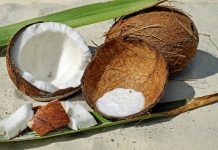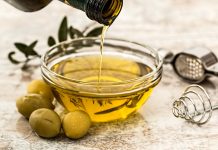
I made a tuna casserole that was on his tray at the hospital. It had no fat content and I didn’t use any seasonings. I went to the store and read the labels on everything I bought. I can’t believe the content of sodium in the products I have been using for so long.
Is there a difference in Romaine lettuce and iceberg lettuce? I wasn’t sure so I bought nothing in the lettuce line.
I will tell the doctor tomorrow about the lack of assistance that the hospital gave me regarding his diet. I really do appreciate your assistance in getting me through the weekend. I did read your sections on several items including the vitamin K one. I think that also helped me. Again thank you for helping.
The foods listed in a table on my vitamin K topic are from a table produced by the USDA. I don’t believe that any other data exists at this time as vitamin K is not required on food labels. You would probably only find vitamin K values on liquid meal replacements like Ensure or vitamin supplements.
While you can observe what foods your husband was served in the hospital, you don’t know the recipes that were used. Hospitals prepare several variations of a recipe for low fat, low sodium or diabetic nutrition therapy orders. The tuna casserole he was served in the hospital may have been different than the one that you use at home, but it may be OK depending on whether you put cream of celery or cream of mushroom soup (2.2 micrograms vitamin K per 1 cup) in the tuna casserole. (No value available for cream of celery soup, but 1 cup of cooked celery has 56.7 micrograms vitamin K.) Until you talk to a dietitian who can talk to your doctor and read your husband’s medical chart, use the table of foods containing vitamin K as a guide for ingredients to omit in recipes at home. Omit ingredients with more than his RDA of vitamin K (120 micrograms per day).
Unfortunately, there are a lot of vitamin and herbal supplements and some may be not recommended for your husband right now. For instance, a multivitamin containing vitamin K would not be recommended and you would only learn that by reading the labels for vitamin K content. Some herbal supplements can act as blood thinners and would not be recommended (ginkgo balboa).
I would urge you to ask your husband’s doctor for a referral to talk to a dietitian as your husband has multiple food restrictions. (Does he also need to restrict salt for high blood pressure?)
Did your husband ever see or talk to a dietitian when he was in the hospital? Nurses and doctors have very limited nutrition education and nutrition therapy knowledge. It is not a good use of a doctor’s or nurse’s time to provide nutrition therapy (diet instructions). A registered dietitian has the education and training to provide your husband with a nutrition therapy that will meet his medical needs.



